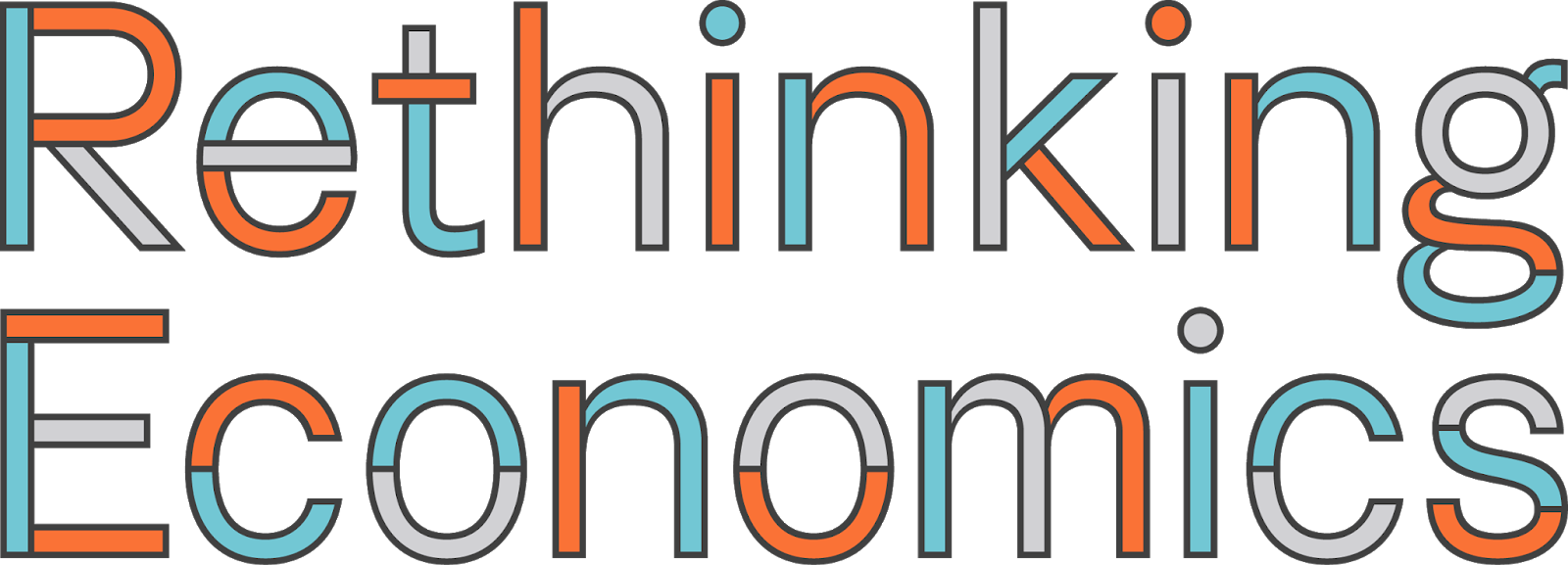Whither Central Banks?
Rethinking Economics, 2020
Pluralist Showcase
In the pluralist showcase series by Rethinking Economics, Cahal Moran explores non-mainstream ideas in economics and how they are useful for explaining, understanding and predicting things in economics.


Whither Central Banks?
By Cahal Moran
In both economics textbooks and public perceptions central banks are a fact of life. On the wall of my A-level economics classroom there was the Will Rogers quote “there have been three great inventions since the beginning of time: fire, the wheel, and central banking”, summarising how many economists view the institution. There is a widespread belief that there is something different about money which calls for a central authority to manage its operation, a view shared even by staunch free marketeers such as Milton Friedman. This belief is not without justification, since money underpins every transaction in a way that apples do not, but we should always be careful not to take existing institutions for granted and central banking is no exception. In this post I will look at the idea of private or free banking, where banks compete (and cooperate) to issue their own currency.
The website alt-m has a ton of resources related to the relevant theory, including a nifty primer by prominent free banker George Selgin on his view of monetary policy. This hinges on ensuring the demand and supply for money are in balance so there is neither excessive inflation nor deflation. According to free bankers, if a private bank issues a level of currency beyond the public’s demand they will simply see it returned, either by customers or by other banks, and this inherently limits their ability to expand beyond the needs of the ‘real economy’. Typically, though not always, free bankers advocate a metal standard or a similar disciplining mechanism, but beyond this believe banks should be regulated solely by competition. Despite what textbooks say there are a number of compelling historical success stories which belie the notion that central bank is either inevitable or unquestionable, and it is worth recounting them in some detail to get an idea of how they operated.
According to Lawrence White, free banking in Scotland began in Edinburgh with the establishment of the Bank of Scotland (BoS) in 1695 which, despite being a clear counterpart to the Bank of England (established just a year earlier), was not a creature of government and was even banned from lending to the state. Some years later the British Parliament, in an act of pettiness befitting of late Feudalism, established the Royal Bank of Scotland (RBS) as a competitor. Over the course of the 18th century and following some initially bitter competition - including the BoS’s brush with bankruptcy and a failed merger attempt between the two – the system settled down and a clearing house was established for exchanging one bank’s notes for another. Modern innovations such as overdrafts and interest on deposits became popular and new banks appeared in Glasgow, Aberdeen and beyond. By 1769 there were 32 private banks in Scotland.
The system was not immune from instability and following the mismanagement of the Ayr Bank in Aberdeen there was a financial crash which ultimately halved the total number of banks by 1773. However, according to White it was mostly smaller banks which failed and the effect on the financial system as a whole – as well as industry – was small and short-lived. Private coordination between banks helped to ameliorate the effect on deposits as both the BoS and RBS accepted Ayr’s now-defunct notes and absorbed their customers. Unlimited liability also ensured that the losses were borne entirely by shareholders (one can’t help but compare this favourably with the consequences of a certain Scottish bank’s more recent misbehaviour). Entry into the market continued and by 1810 there were 10 more banks than there had been in 1769. This stands in stark contrast to the panics in England’s more centralised system at the time, particularly in 1826.
In terms of the system’s general performance, White notes that there were far more branches per customer in Scotland than in the US or England at the time, and profit margins were kept thin by competition. Failures were mostly local and the market was not dominated by any one player, with many new entrants reaching or even surpassing the levels of circulation of the original two banks. The system was praised by both David Hume and Adam Smith at the time, having produced a more diverse array of banking types and financial innovations than England or elsewhere. Although it’s difficult to attribute growth to anyone one factor, Scottish per capita income almost caught up with England’s by 1845 – despite poor access to natural resources and having been only half of England’s a century beforehand – so it’s not credible to claim the financial system wasn’t working. However, at this point the market was closed off by two major acts of government, leading to a gradual process of monopolisation culminating in today’s system, which boasts a grand total of 3 Scottish banks.
Canada’s free banking system started to emerge around the same time as Scotland’s disappeared, with the Bank of Montreal appearing early in the 19th Century. This progressed until there were several lightly regulated banks whose currencies were ultimately backed by gold. As in Scotland, banks had no incentive not to cooperate with their rivals and attempts to sabotage one another were rare and unsuccessful. Canada’s system proved stable: according to Selgin and White, fluctuations in interest rates were much smaller than in the neighbouring USA, and panics were rare. In fact, it was only through foreign shocks – one from England in 1836, and another from the USA in 1929 – that Canada’s system encountered serious difficulties. Despite these incidences, the system prevailed and during the Great Depression no Canadian banks actually failed.
Of course, history offers no shortage of less obviously favourable examples of free banking. Prior to the Civil War many states in the USA had a private system where notes were backed by government bonds. It was beset by questionable practices, including so-called ‘wildcat banking’ (read: fraud) and widespread losses and failures. Panics were relatively frequent and this ultimately provided the rationale for establishing the Federal Reserve in 1913. Although there is debate over exactly how severe the problems were, the literature seems agreed that the USA’s system was not as successful as Scotland or Canada’s – apart from New York. Similarly, late 19th Century Australia indisputably experienced the most severe financial crisis under a free banking system to date.
In their review of the free banking literature, Briones and Rockoff point out that most of the historical examples should be called “lightly regulated” rather than “free”, since there were always some restrictions including whether banks had to back their notes with precious metal, or government bonds; types of liability; which notes banks could issue; whether setting up a bank required a legal charter; and more. The authors make two points which jumped out at me: firstly, the difficulty of objectively determining exactly how ‘free’ a given banking system was; secondly, that free banking tends to attract study by people who are predisposed towards it. Funnily enough, when free bankers review the literature they tend to conclude that all the best performing cases were the freest, and all the problematic cases were due to government. But when there is no true ‘free’ system, one can always blame some pesky regulation or government program should things go wrong! (This works in the other direction, too: opponents of free banking will choose to see the history their way).
It is therefore unsurprising that every case I have summarised is disputed on both sides, and unfortunately the research remains limited when compared to, say, the number of DSGE models which model the best policy for central banks. As something of an endogenous money zealot I can’t end this post without saying I’m not sure whether free bankers have properly grappled with the credit-based nature of the modern system and whether or not this applied in the past. Banks do not lend out their deposits now, but most of the theory and history summarised above proceeds as if they did in the past - is this really true, and if so would it be feasible or desirable to return to such a system? Nevertheless, the existence of central banks should not be taken as a fact of life and the history of free banking systems poses a strong counterpoint to those who would disagree. With recent financial disfunctions and state-sponsored monopoly in the financial system, it’s hard to dispute that we should be prepared to ask the question of whether central banks should exist at all.
There is still so much to discover!
In the Discover section we have collected hundreds of videos, texts and podcasts on economic topics. You can also suggest material yourself!
Discover material Suggest material

